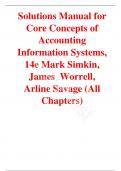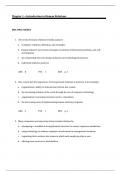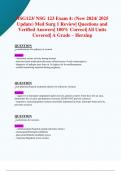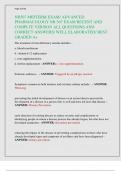Exam (elaborations)
Solutions Manual for Core Concepts of Accounting Information Systems, 14th Edition by Mark Simkin, James Worrell, Arline Savage (All Chapters)
Solutions Manual for Core Concepts of Accounting Information Systems, 14e Mark Simkin, James Worrell, Arline Savage (All Chapters). Table of Contents Chapter 1 Accounting Information Systems and the Accountant 1 1.1 Introduction: Why Study Accounting Information Systems? 1 1.2 Careers in Accounting...
[Show more]












